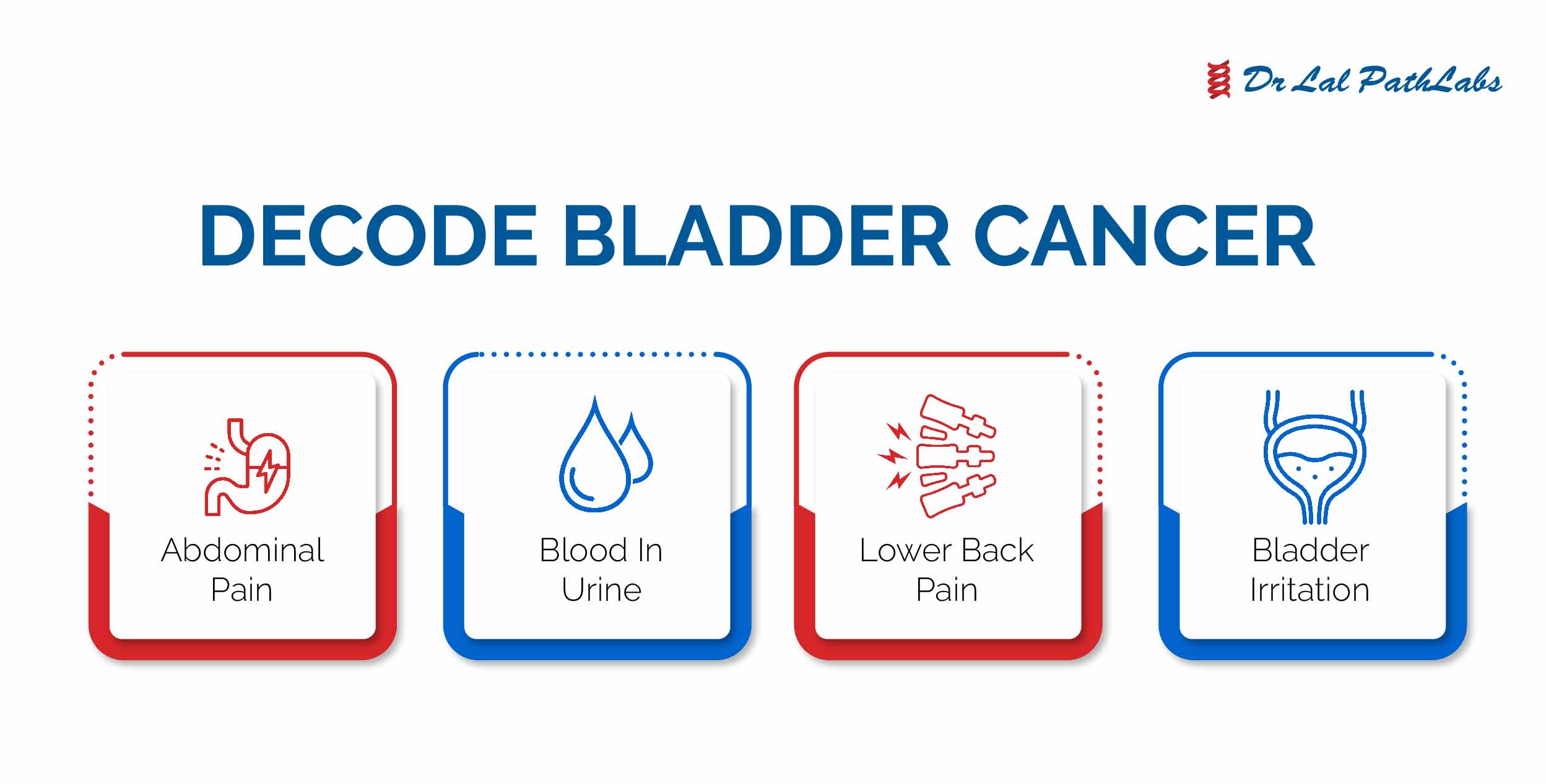Bladder Cancer: Symptoms, Diagnosis and Prevention
Overview
Bladder cancer is abnormal cell growth in the urinary bladder. The bladder is a hollow organ in the lower part of the abdomen that stores urine before expelling it from the body through urination.
If untreated, bladder cancer may grow through the bladder walls to nearby lymph nodes and then other areas of the body, including the bones, lungs, or liver.

What are the types of Bladder Cancer?
The various types of bladder cancer include:
- Transitional cell carcinoma: It is the most common type of bladder cancer that begins in the urothelial cells which line the urethra, bladder, ureters, renal pelvis, and other organs.
- Squamous cell carcinoma: It begins in the thin, flat cells known as squamous cells that line the inside of the bladder, after a chronic bladder infection or irritation.
- Adenocarcinoma: A rare type of bladder cancer that begins in glandular cells that are found in the lining of the bladder.
- Small cell carcinoma: It often grows quickly and starts in the nerve-like cells called neuroendocrine cells.
- Sarcoma: A rare type of bladder cancer that starts in bladder muscle cells.
What are the signs and symptoms of Bladder cancer?
The signs and symptoms of bladder cancer include:
- Blood in the urine
- Pain during urination
- Frequent urination
- Chronic bladder infections
- Unable to urinate
- Pain in the lower back
- Pain in the abdomen
- Bone pain or tenderness
- Unintended weight loss
- Loss of appetite
- Swelling in the feet
- Fatigue
What are the risk factors associated with Bladder cancer?
The following risk factors are known to be associated with bladder cancer:
- Smoking
- Family history
- Radiation exposure
- Chemotherapy
- Chronic catheter use
- Exposure to cancer-causing chemicals
- Frequent bladder infections
- Older age
- Being male
How is Bladder cancer diagnosed?
The doctor will do a physical examination and may recommend the following tests to diagnose bladder cancer:
- Urinalysis to detect blood in the urine.
- Cytology to examine cells under a microscope for signs of cancer.
- Cystoscopy is the primary test to identify and diagnose bladder cancer.
- Imaging tests such as CT Scan, MRI, Bone scan, or Chest X-ray help confirm a diagnosis and reveal if cancer has spread within the body.
How is Bladder cancer treated?
The treatment options for bladder cancer depend on the location and stage of the bladder cancer, overall health, and age. The options include:
- Surgeries such as TURBT, cystectomy
- Radiation therapy
- Targeted drug therapy
- Immunotherapy
- Chemotherapy
What are the tips to prevent Bladder cancer?
The exact causes of bladder cancer are unknown, hence there is no way to prevent it altogether.
However, the risk of bladder cancer can be reduced by the following tips:
- Avoid smoking and second-hand smoke
- Avoid cancer-causing chemicals
- Drink plenty of water
Disclaimer:
This blog is for informational purposes only and should not be construed as advice or as a substitute for consulting a physician. It is not a substitute for medical advice or treatment from a healthcare professional.














